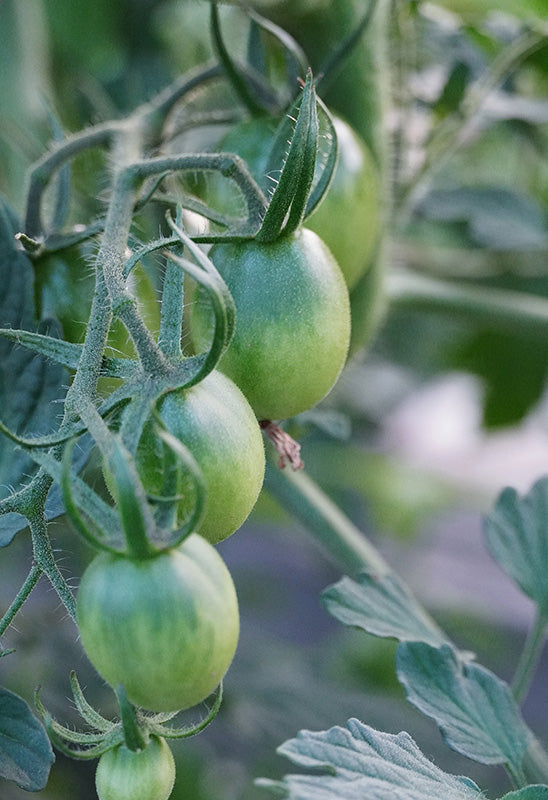By Michael Jenkins

This latest installment in our ongoing series about tomatoes will address some of the problems and peculiarities that come along with growing tomatoes in the fall. While tomatoes are a popular garden vegetable all over the world, they are relatively sensitive to climate, weather, soil, and other local conditions. This means that different places at different times of the year may face some problems in getting the most out of their tomato plants. The most common problem with fall tomatoes is keeping them growing and healthy after the summer. Many fall tomato plants do just fine—in hotter climates fall may be the ideal time for growing tomatoes. Other gardeners notice a slowdown in their tomato plants as fall arrives, with fruits not developing to full size or failing to ripen. There could be several causes for these problems with your fall tomatoes, so let’s take a look at some of the most common.
For any issues with your fall tomatoes, the first step is to check and make sure that they have everything they need. Like all plants, tomatoes need the right combination of sunlight, temperature, water, and nutrition in order to thrive. By the time autumn rolls around, your soil may need refreshing with either compost or fertilizer (or both). Your soil pH may have changed over the course of the season and you may need to check it and adjust. If your tomatoes are in containers, you may need to relocate them to get better sun. As the weather cools, they may need less water. Make sure the basics are in place, as these are the most likely source of issues.

The next thing to consider is temperature. Things cool down as summer fades away and the autumn season progresses, and that can affect your tomato plants. While we think of tomatoes as a summer plant, in love with the sun, the reality is that temperatures either too hot or too cool can limit how your tomatoes grow and produce fruit. Tomatoes grow best in a fairly limited temperature range. If nighttime temperatures drop below 55F (13C), blossoms may drop from the plant and fruit will stop growing becomes slow to ripen. Likewise, if temperatures exceed 90F (32C), the same thing may occur. Temperatures change when fall arrives, as does the angle of the sun in the sky and thus the amount of sunlight your garden receives. Double check to ensure that your tomatoes aren’t getting too hot or too cold and are receiving the right amount of light. If nighttime temperatures are getting a bit too cool, a plant cover or greenhouse might help.

After addressing all these issues as best we can, it’s time to remind ourselves that gardening is a seasonal activity. All good things must come to an end, and it may be time to let this season’s tomatoes go and start planning for next you. You can keep this season’s tomatoes alive in your memory by preserving their fruit for winter use. You can also save seeds and take cuttings to start new plants next year, or move container plants inside to keep them over the winter. But with fall here and winter not far behind, many of us may need to plant for those seasons while celebrating the wonderful memories of a tomato-filled summer.

Leave a comment